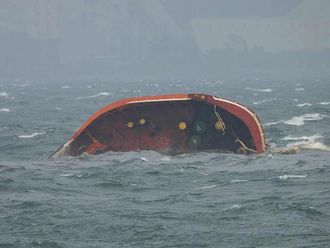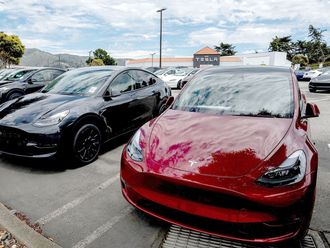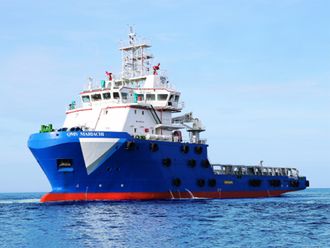Singapore: Booming production of light condensates in the Middle East and gas-rich Asia may offer refiners a cheap and fast way to capture robust profits, helping ease capacity strains after years of slow investment.
An ultra-light form of oil, condensate is typically a by-product of natural gas production and its volumes are set to surge over the next few years as gas fields are actively developed to meet growing demand for cleaner fuels.
Condensate can be blended with normal crude to run in refineries but can also be processed in special units called splitters, an option that may be growing more attractive as the best way to capitalise on growing demand for premium fuels.
Condensate, when processed through a splitter, produces 50 per cent naphtha and a large portion of diesel, products whose profit margins have soared over the past year, helping crude oil prices to more than double in two years.
"The demand for new condensate splitters is from both push and pull factors," said Al Troner, managing director of Asia Pacific Energy Consulting (APEC).
Middle East nations need more capacity to make transport fuels, particularly gasoline, he said. And major petrochemical makers in Asia such as China and Thailand require more naphtha as feedstock to produce ethylene, the basic building block for everything from compact discs to car dashboards, he added.
The attraction of a new splitter is enhanced by bullish forecasts for condensate supply.
Condensate output East of Suez the Middle East, Russian far east and Asia Pacific will more than triple between 2003 and 2013 to almost 6 million barrels per day (bpd), a joint study by Hawaii-based FACTS and Troner's APEC showed.
Production of condensate is outstripping that of crude, reserves of which are dwindling in this region. East of Suez condensate output will rise to over 14 per cent of total liquids production by 2013, up from 5.4 per cent 10 years ago.
APEC calculates that a condensate splitter with a 100,000-bpd capacity costs around $200-$250 million. This compares favourably with a mid-sophisticated 220,000-bpd refinery, which would cost 4.8 to 6 times more, or a 150,000-bpd complex refinery, worth up to $3 billion.
"For refiners who don't want to invest so heavily in upgrading projects that are quite expensive, something along the lines of a sour condensate project might be an attractive, low-cost substitute," said John Vautrain, vice-president in Singapore of Houston-based Purvin and Gertz.
Demand for condensate, driven by new splitters, is expected to almost triple between 2003 to 2013 to 4.679 million bpd, according to the FACTS/APEC base-case scenario.
Middle East producers who will account for about three-quarters of the region's condensate output are already building new splitters and will be the main buyers of the locally produced condensate.
Saudi Arabia is considering the construction of up to three splitters, having already commissioned one.
Qatar's new Laffan refinery, due to come onstream in mid-2008, will include a major condensate splitter. Iran is planning to build three units, each of 120,000 bpd.
Abu Dhabi is planning to boost its splitter capacity to at least 240,000 bpd from 180,000 bpd.
Asia is lagging but Shell's new joint-venture petrochemical complex in China includes a splitter, while smaller units are being built in Thailand and Vietnam, leaving room for more oil firms to take advantage, especially if condensate prices remain weak.
New splitters will drive up demand for condensate, and most likely prices, too. But for now, condensate is viewed as a cheap by-product, attracting the attention of buyers whose refineries are complex enough to enable easy blending.
"There is a constraint when you process condensate. You have to blend it with other crude," a trader with a Japanese refiner said.
Qatar's Rasgas sour condensate has traded typically at a $4-$6 premium to average Dubai quotes, usually below light sweet Asian Tapis benchmark crude.
Asia Pacific's largest condensate flow, Australia's North West Shelf, also trades below Malaysia's Tapis crude, despite being a low-sulphur condensate.
Oil traders say the swift rise in output particularly of Middle East condensate high in sulphur may keep prices under pressure until new capacity can be built. Condensate produced in Asia typically contains less sulphur and is easier to refine.
"High sulphur, high metals will always be tough to place," said a trader with another Japanese company.












